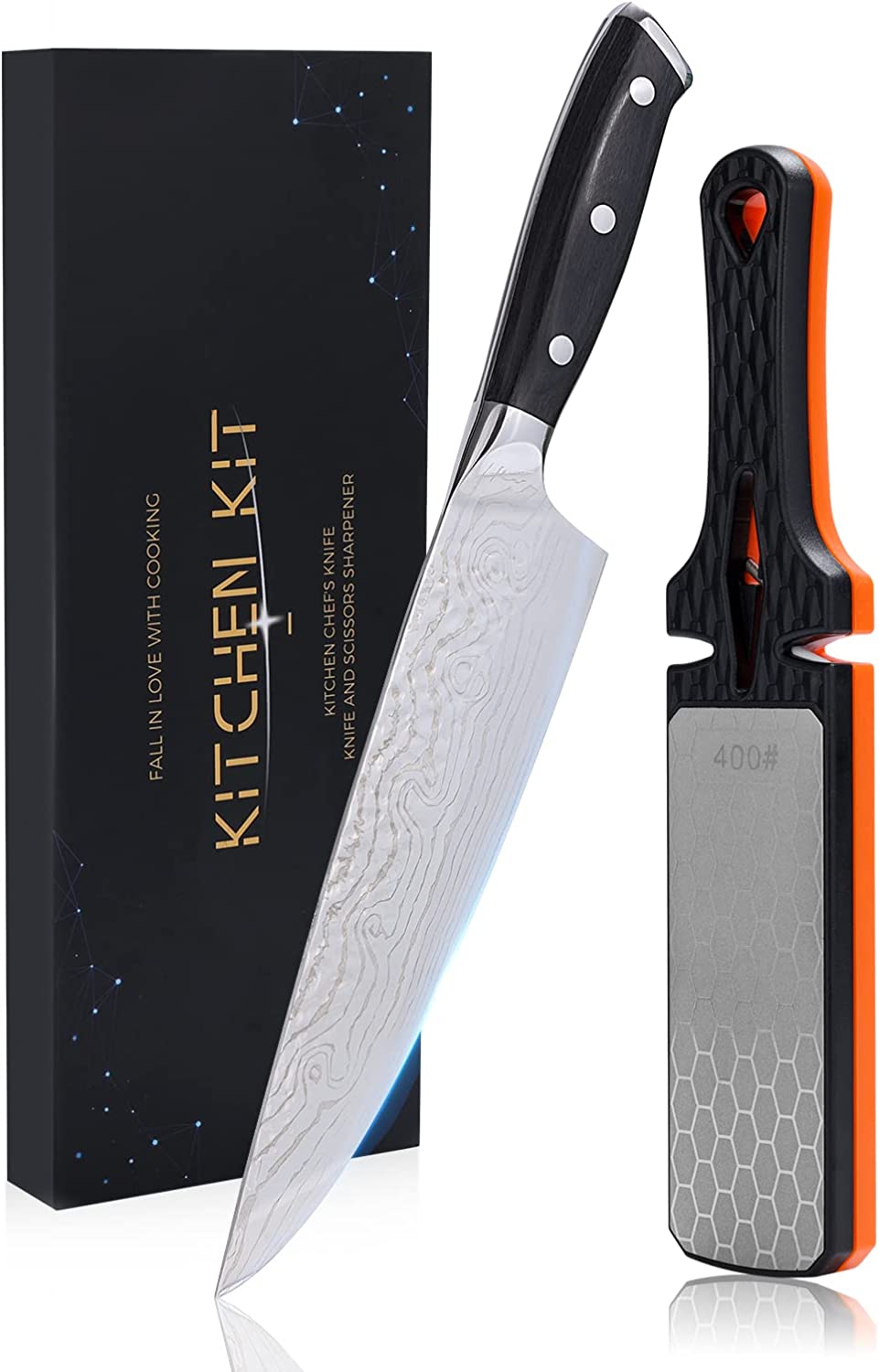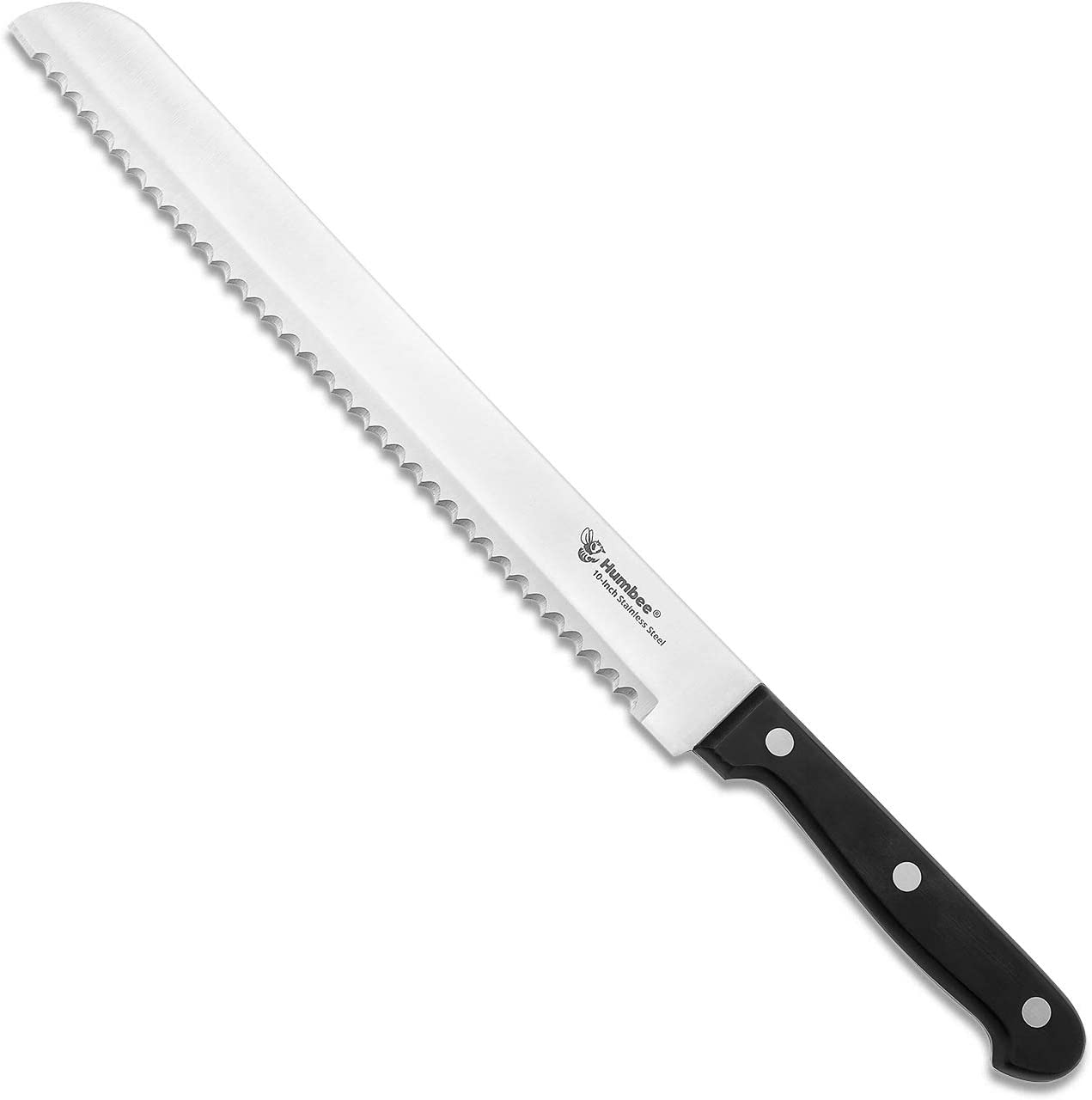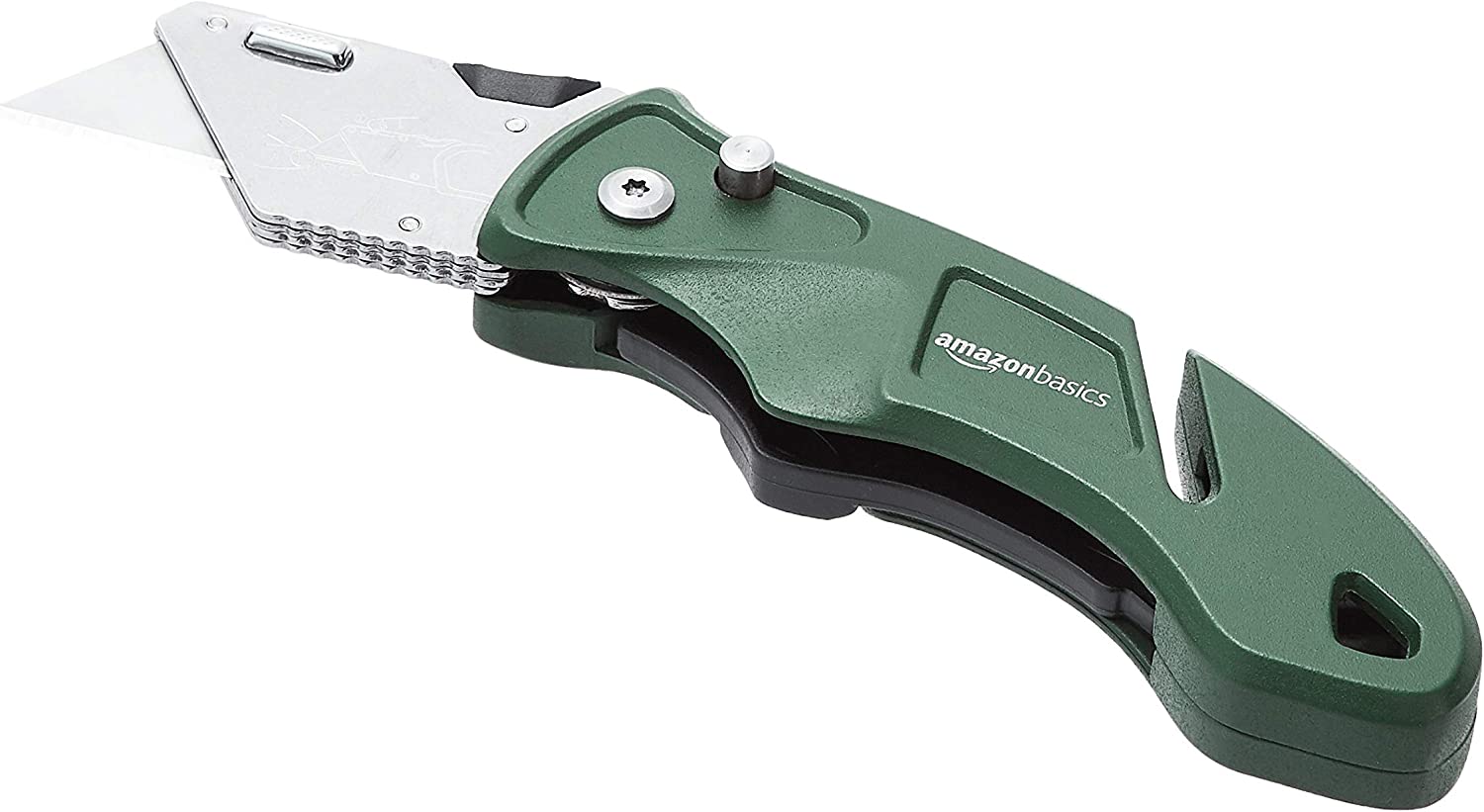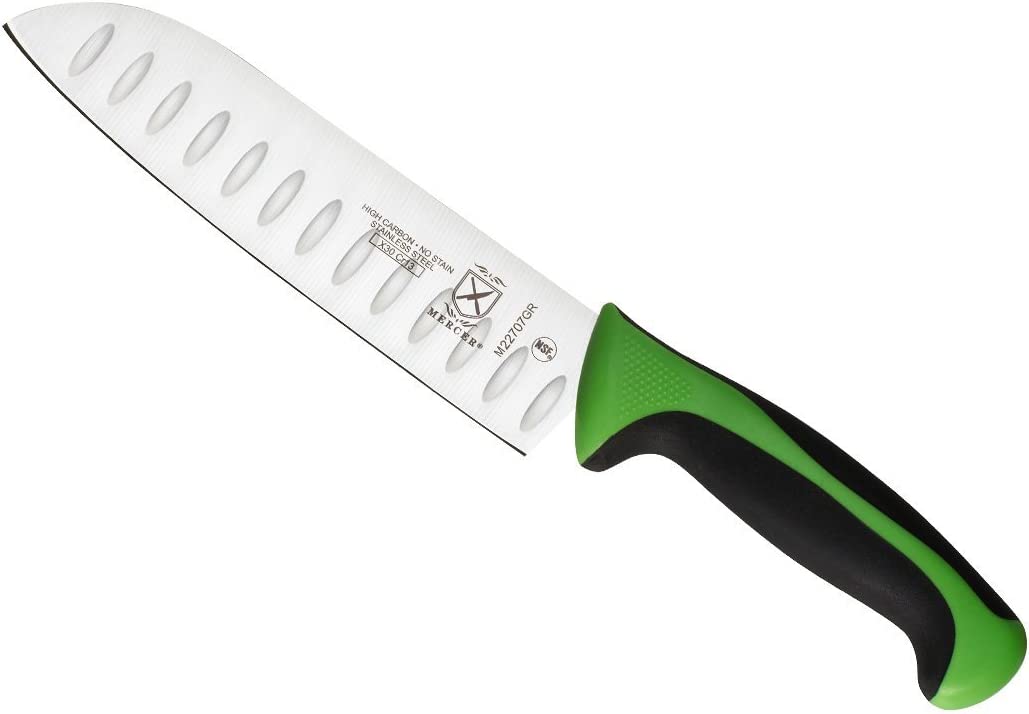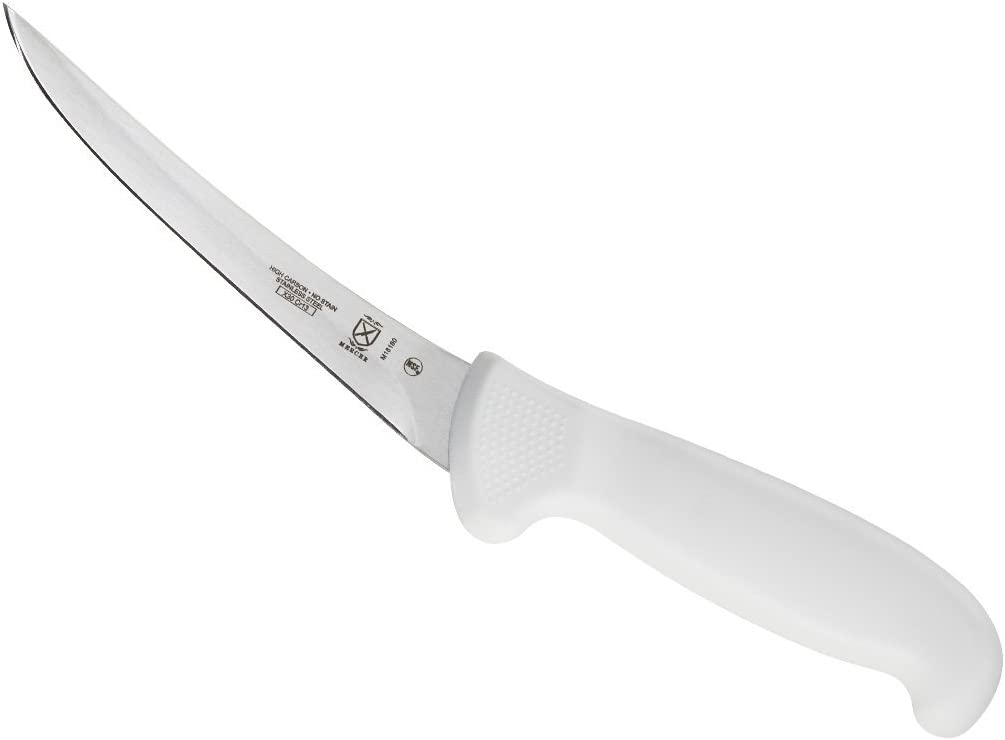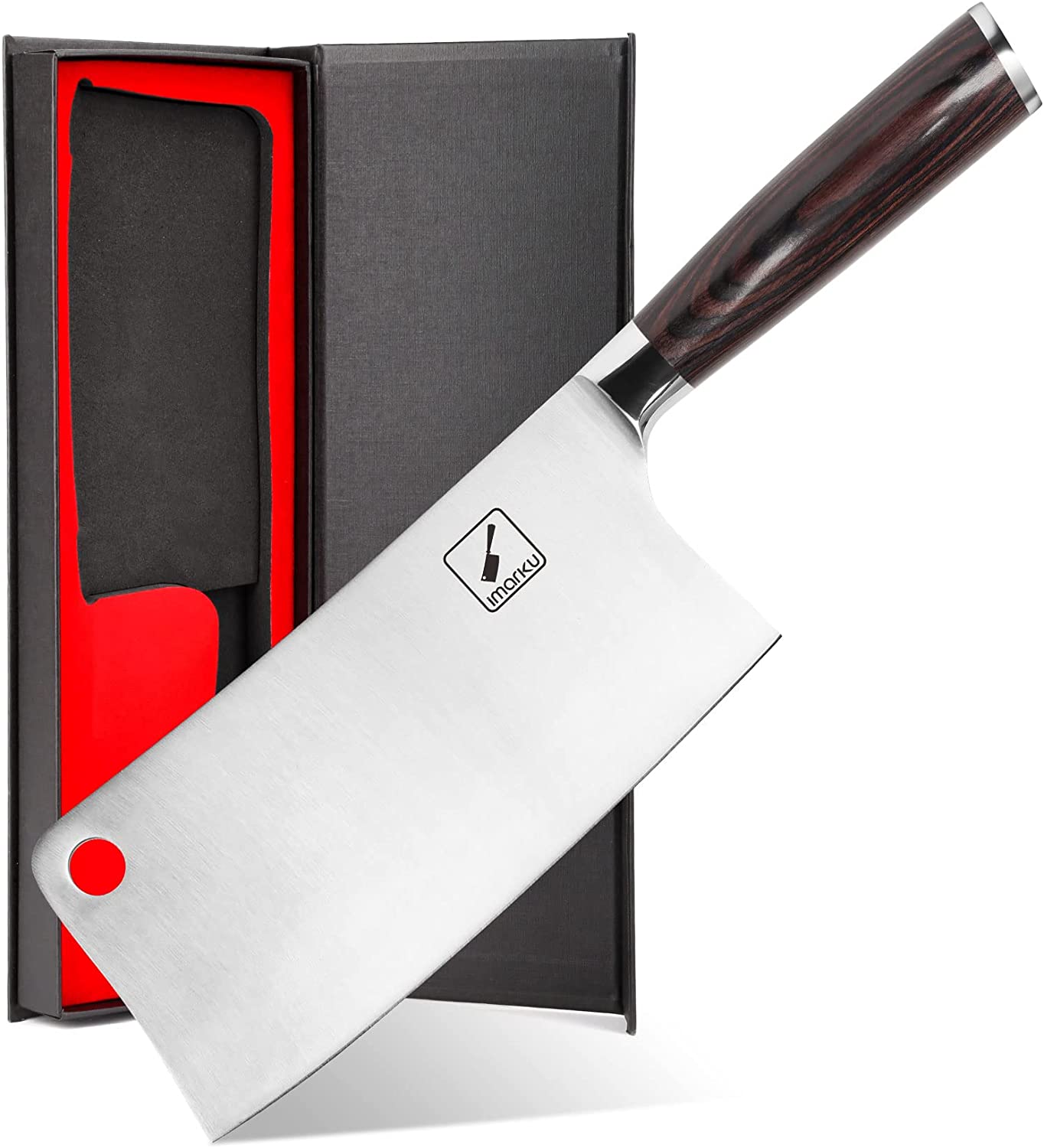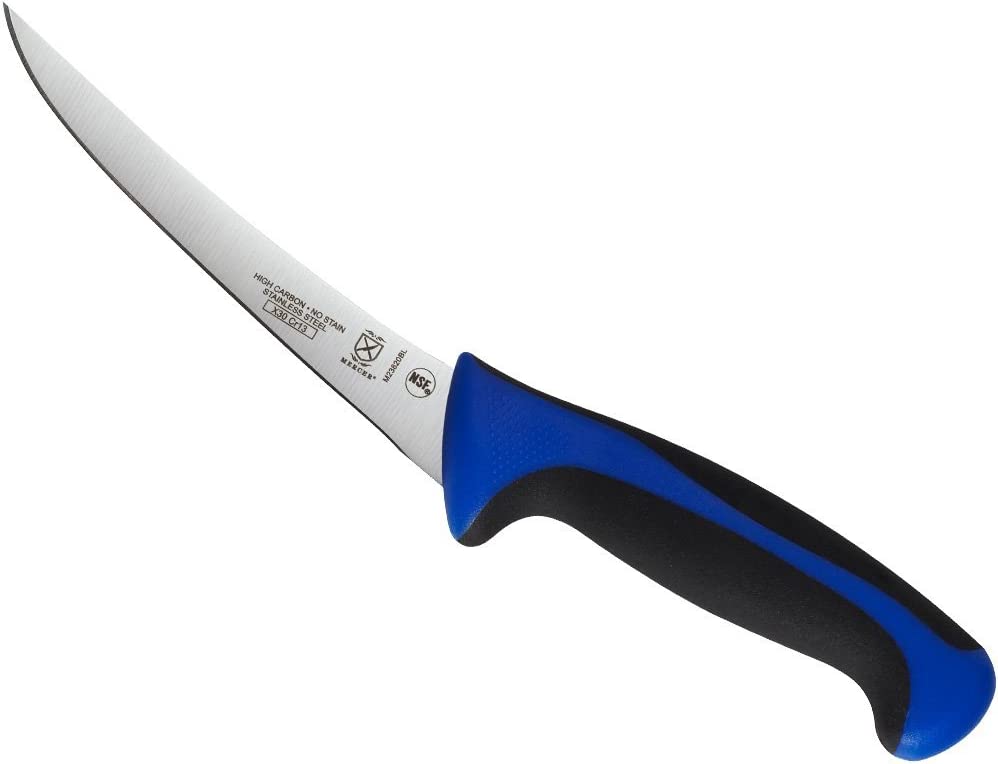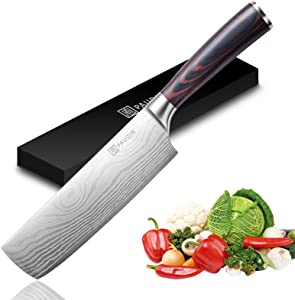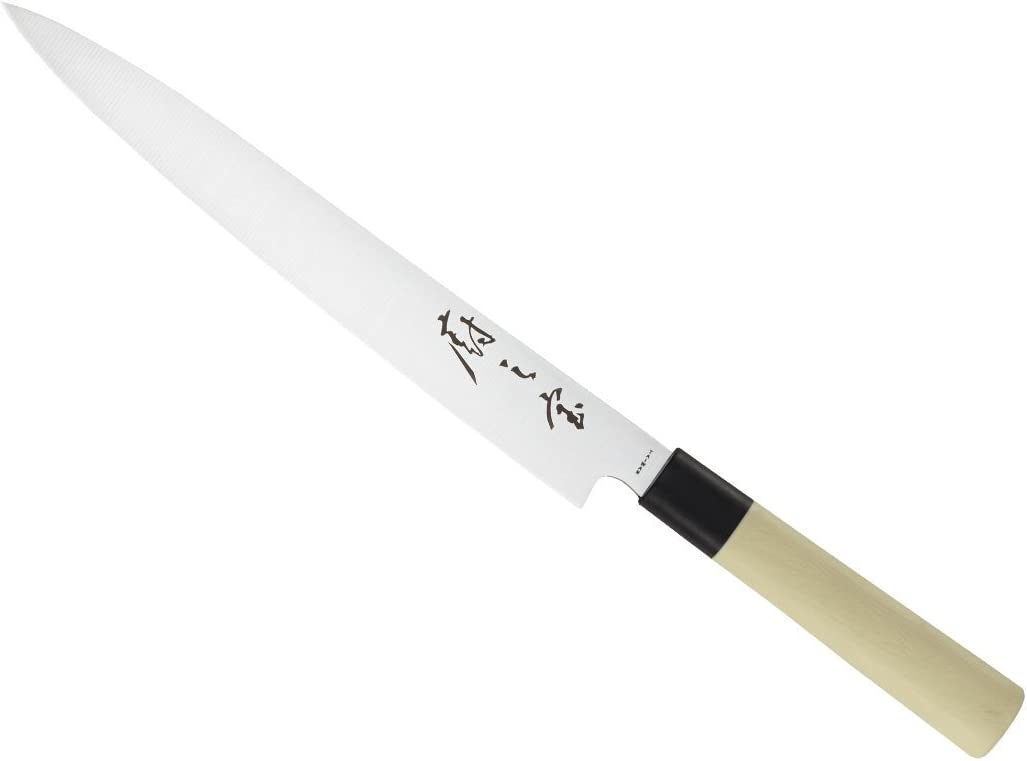Different Types of Kitchen Knives
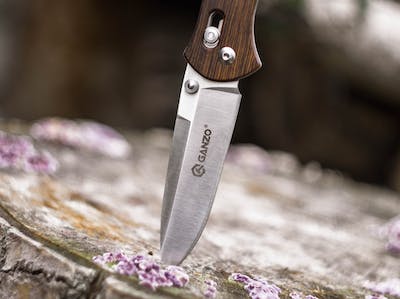
In this article, we will explore the importance of having different types of kitchen knives and the role they play in the kitchen. Whether you are a professional chef or a home cook, having the right kitchen knives can make food preparation easier and more efficient. Let’s dive in and explore the world of kitchen knives.
A kitchen knife is a crucial tool in the kitchen, and there are different types of kitchen knives that are designed to perform specific tasks. Having a variety of knives in your kitchen can make food preparation faster, easier, and more efficient. Here, let’s find all the types we have and how to choose the best knife types.
Common Different Types of Kitchen Knives
1.Chef’s Knife
The chef’s knife is the most versatile and commonly used knife in the kitchen. It has a broad, sharp, and curved blade that tapers to a point, allowing for efficient chopping, slicing, and dicing of a wide range of foods. Chef’s knives come in various sizes, from small 6-inch blades to larger 12-inch blades. The blade is typically made of high-carbon stainless steel, which is durable, sharp, and resistant to rust and corrosion.
2. Paring Knife
The paring knife is a small, versatile knife used for precise cutting and trimming of fruits and vegetables. It has a short, thin blade that tapers to a point, allowing for easy maneuvering around small and curved surfaces. Paring knives come in various sizes, ranging from 2-4 inches in length. The blade is typically made of high-carbon stainless steel, which is sharp, durable, and resistant to rust and corrosion.
3. Bread Knife
The bread knife has a long, serrated blade that is perfect for cutting through crusty bread without crushing the soft interior. The serrated blade allows the knife to saw through the bread, keeping the slices intact and preventing the bread from becoming flattened. Bread knives come in various sizes, ranging from 7-12 inches in length. The blade is typically made of high-carbon stainless steel, which is durable and resistant to rust and corrosion.
4. Utility Knife
The utility knife is a multipurpose knife that can be used for a variety of tasks, from cutting meat to slicing cheese. It has a medium-sized blade that is thinner and more flexible than a chef’s knife, making it perfect for tasks that require precision and control. Utility knives come in various sizes, ranging from 4-7 inches in length. The blade is typically made of high-carbon stainless steel, which is durable, sharp, and resistant to rust and corrosion.
5. Santoku Knife
The Santoku knife is a Japanese-style knife that is similar to a chef’s knife but has a shorter and wider blade. It has a straighter edge than a chef’s knife, making it perfect for chopping and slicing vegetables, meats, and fish. Santoku knives typically have a blade length of 5-8 inches and are available in various blade styles. The blade is typically made of high-carbon stainless steel, which is sharp, durable, and resistant to rust and corrosion.
Specialty Different Types Kitchen Knives
1. Boning Knife
The boning knife has a narrow and flexible blade that is perfect for removing meat from bones. It is ideal for tasks such as deboning poultry, trimming meats, and filleting fish. Boning knives come in various sizes, ranging from 5-7 inches in length. The blade is typically made of high-carbon stainless steel, which is durable, sharp, and resistant to rust and corrosion.
2. Cleaver Knife
The cleaver is a heavy and sturdy knife that is perfect for chopping meat and breaking down poultry. It has a thick and wide blade that can be used for tasks such as splitting bones and cutting through thick meat. Cleavers come in various sizes, ranging from 6-12 inches in length.
The cleaver is a heavy and sturdy knife that is perfect for chopping meat and breaking down poultry. It has a thick and wide blade that can be used for tasks such as splitting bones and cutting through thick meat. Cleavers come in various sizes, ranging from 6-12 inches in length. The blade is typically made of high-carbon stainless steel, which is durable, sharp, and resistant to rust and corrosion.
3. Serrated Utility Knife
The serrated utility knife is similar to a regular utility knife, but it has a serrated edge that makes it perfect for cutting through foods with tough exteriors and soft interiors. It is ideal for tasks such as slicing tomatoes, citrus fruits, and bread. Serrated utility knives come in various sizes, ranging from 5-7 inches in length. The blade is typically made of high-carbon stainless steel, which is durable, sharp, and resistant to rust and corrosion.
4. Nakiri Knife
The Nakiri knife is a Japanese-style knife that is designed for slicing and chopping vegetables. It has a flat, thin blade that allows for precision cutting and minimal damage to delicate ingredients. Nakiri knives typically have a blade length of 6-7 inches and are available in various blade styles. The blade is typically made of high-carbon stainless steel, which is sharp, durable, and resistant to rust and corrosion.
5. Sashimi Knife
The Sashimi knife is a Japanese-style knife that is used for filleting fish and preparing sashimi. It has a long and thin blade that is designed for making precise cuts and slices. Sashimi knives typically have a blade length of 8-12 inches and are available in various blade styles. The blade is typically made of high-carbon stainless steel, which is sharp, durable, and resistant to rust and corrosion.
Choosing the Right Kitchen Knife
Selecting the right kitchen knife can seem overwhelming with so many options available. Consider the following factors when choosing a kitchen knife:
Purpose
Consider what tasks you will be using the knife for. If you frequently prepare meat, a chef’s knife or cleaver may be more suitable, while a serrated knife is better for slicing bread or tomatoes.
Size and Weight
The size and weight of a knife can affect its ease of use. A larger, heavier knife may be better for chopping dense foods, while a smaller, lighter knife may be better for precision cutting.
Blade Material
Consider the type of blade material when selecting a knife. Stainless steel and high-carbon stainless steel are popular options as they are durable, sharp, and resist rust and corrosion.
Handle
The handle of a knife can impact your grip and comfort while using it. Look for a handle that fits comfortably in your hand and provides a secure grip. Handles can be made from materials such as wood, plastic, or metal.
Price
The cost of a knife can vary widely. It is important to balance quality and cost when making a purchase. A high-quality knife may be an investment, but it can last for years with proper care and maintenance.
Maintenance and Care of Different Types of Kitchen Knives
Proper maintenance and care of kitchen knives are essential for keeping them sharp, safe, and long-lasting. Here are some tips for taking care of your all different type of knives:
✔️Store knives properly – Knives should be stored in a knife block, on a magnetic strip, or in a sheath to protect the blade and prevent damage.
✔️Sharpen knives regularly – A dull knife can be dangerous and ineffective. Sharpen your knives regularly with a sharpening stone or honing steel.
✔️Hand wash knives – Avoid putting knives in the dishwasher as they can cause damage to the blade and handle. Hand wash knives with warm, soapy water and dry them thoroughly.
✔️Use knives on appropriate surfaces – Knives should be used on cutting boards made of wood, plastic, or bamboo. Avoid using knives on hard surfaces such as glass or granite, which can damage the blade.
FAQ About Different Types of Kitchen Knives
What are the different types of kitchen knives?
There are several types of kitchen knives, each designed for specific tasks. Some common types include chef’s knives, paring knives, serrated knives, utility knives, and boning knives. Chef’s knives are versatile and can be used for a variety of tasks, such as slicing, dicing, and chopping. Paring knives are smaller and ideal for intricate tasks like peeling and trimming. Serrated knives have a jagged edge, perfect for slicing through bread or tomatoes. Utility knives are smaller versions of chef’s knives and can handle various cutting tasks. Lastly, boning knives are designed for separating meat from bones.
What is the difference between a forged and a stamped knife?
Forged knives are made from a single piece of steel that is heated and shaped using a hammer or press. This process creates a stronger and more durable knife with a heavier feel. Stamped knives, on the other hand, are cut out from a large sheet of steel. They are lighter and less expensive than forged knives but may not be as durable. Both types can be of high quality, but forged knives are generally preferred by professional chefs.
How should I care for my kitchen knives?
Proper care is essential to maintain the longevity and performance of your kitchen knives. It is recommended to hand wash them with mild soap and warm water, then dry them immediately. Avoid using abrasive materials or harsh cleaners, as they can damage the blade. Store knives in a knife block or on a magnetic strip to prevent them from dulling or getting damaged in a drawer. Regularly sharpening your knives using a honing rod or a knife sharpener will also help maintain their sharpness.
What is the best material for kitchen knife blades?
The most common materials used for kitchen knife blades are stainless steel and high-carbon stainless steel. Stainless steel blades are resistant to rust and corrosion, making them low maintenance. High-carbon stainless steel blades offer a sharper edge and better edge retention, but they require more care to prevent rusting. Ultimately, the best material depends on your personal preference and cooking style.
How often should I sharpen my kitchen knives?
The frequency of sharpening your kitchen knives depends on how often you use them and the type of blade. As a general rule, it is recommended to sharpen your knives every 2-3 months with regular use. However, if you notice a significant decrease in performance or the blade becomes dull, it is time to sharpen them. Using a honing rod regularly can help maintain the sharpness between sharpenings.
Conclusion
Having different types of kitchen knives in your arsenal can make food preparation faster, easier, and more efficient. Each knife is designed for specific tasks, from chopping and slicing to filleting and deboning. When selecting knives, it is important to choose high-quality knives that are durable, sharp, and resistant to rust and corrosion. By investing in a set of quality kitchen knives, you can elevate your cooking skills and create culinary masterpieces in your own kitchen.

Written by Ikra
More From This Category
Top 10 Silk Laundry Detergent Brands You Should Try
Silk detergent is essential for preserving your delicate silk items’ natural beauty and longevity. Silk is a natural protein fiber with a fragile structure and complex protein fibers that require special care when washing. Using regular laundry detergents on...
Top 10 Silk Laundry Detergent Brands You Should Try
Silk detergent is essential for preserving your delicate silk items’ natural beauty and longevity. Silk is a natural protein fiber with a fragile structure and complex protein fibers that require special care when washing. Using regular laundry detergents on...
Top 10 Silk Laundry Detergent Brands You Should Try
Silk detergent is essential for preserving your delicate silk items’ natural beauty and longevity. Silk is a natural protein fiber with a fragile structure and complex protein fibers that require special care when washing. Using regular laundry detergents on...
